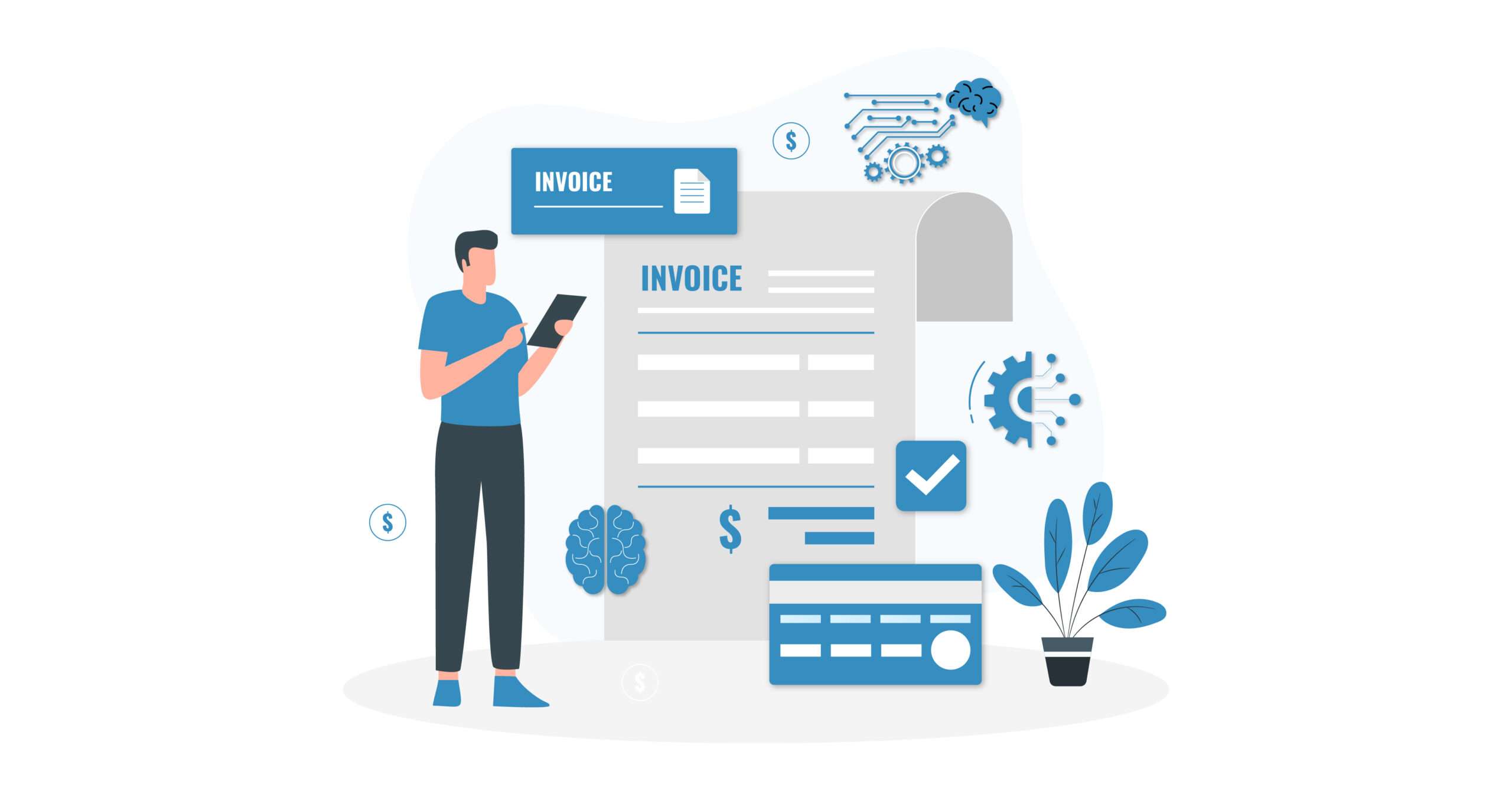Vision and making money are two core aspects of running a business. Imagine, your team works days and nights on a project to bring some miraculous results to fruition. Every breakdown right from onboarding vendors, making that perfect project plan, and the final delivery of goods/services was handled perfectly.
Now, the time has come to get rewarded in cash and kind for the same. A tricky situation arrives. The accounts team on the client side is yet to process your invoices. They are adept at their job but stuck with tools that require multiple manual inputs, falter on compliance rules, and cannot be trusted with accuracy. You cannot blame them either as most businesses enter 57% of invoice data manually.
The project you have delivered required multiple guidelines to be followed and your invoices were on point. A chain reaction of frustration ensues as time gets wasted on both ends in following up and you think why even work on such a project?
While things eventually settle down, there are facts that both parties need to understand about eliminating such situations in the future. The only thing that needs to be done is to work on the very essence of business and that is- Automated Invoice Processing.
If you are wondering how it can address the above-mentioned issues, fulfill all guidelines, keep track of project milestones, and clear invoices on autopilot, this blog will put an end to all your doubts!
Automated Invoice Processing: What is It All About?
Automated invoice processing encompasses tracking supplier invoices, addressing discrepancies if any, getting them rectified, and clearing payments. The process involves a series of steps until the accounts are cleared and settled.
With tons of responsibilities in the accounts department, right from managing orders to supplier invoicing, even the most organized departments can be prone to-
-Delayed reimbursements
-Double payments
-Risking relationships
-Losing out on supplier’s trust
Because of juggling with a pool of invoices from different vendors that hinders typical processing times; multiple finance teams are leveraging automation to save time, simplify collaboration, and aid growth. From extracting invoice data, updating ERP (Enterprise Resource Planning) entries, and boosting overall efficiency automated invoice processing tools not only save time and money, but they massively reduce errors and instances of fraud.
Routine accounts also benefit manifolds with these tools due courtesy-
- 3-Way Matching- Comparing purchase order, goods and receipt, and the invoice before approving the invoice
- GL(General Ledger) Coding- Assigning alphanumeric codes to each financial entry in an organization’s ledger
- Data Entry into ERPs
When teams are free from repeated manual work they can focus on faster closures and working on other activities.
How Does Automated Invoice Processing Work?
Automated invoice processing involves three simple steps:
1. Capturing Invoice Data
Businesses receive invoices from multiple sources. Automated invoicing solutions consolidate invoice data from all these channels and send them to a single receiving email address. Moreover, physical invoices are scanned in bulk and then sent tool
Invoices are then pulled into the system and saved in a folder or cloud then synced in real-time with invoice automation software. Once this is achieved the system reads the data using AI, ML, and OCR technologies for further verification.
2. Interpreting Invoice Data as per Business Rules
Now that the data is placed, a few verifications are performed based on the business rules. Automated tools verify if the vendor exists as per their database or not. Invoices are then matched against POs and other records to ensure data consistency. Invoices that don’t clear these verifications are flagged immediately.
3. 3-Way Match
The next and final step is to route the invoices to the right decision-makers. Once this is done the payment is settled. Post that you can export a final report containing all data in a format compatible with ERP. These tools offer multiple integrations and can be used to achieve organizational transparency with ease.
Must-Have Features in An Automated Invoice Processing Tool
Now that you know how these tools work, it is time you also understand how to single out the right solution among a host of options in the market.
1. User-Friendly Interface
An automated invoice processing solution that is intuitive, easy to use, and has a short learning curve will ensure smoother transitions.
2. Adherence to Industry Practices
A software solution must ensure compliance, protect data, and offer additional security features.
3. Reliable Customer Support
A vendor that provides exhaustive training, timely support, and maintenance is a must for regular upgrades and smooth implementation in the long run.
4. Customization
Businesses will have their processing requirements and rules to be followed. Thus, you must look for solutions that offer in-depth customization capabilities.
5. Scalability Check
The chosen automated invoice processing solution must be able to handle a large volume of invoices while paving the way for future growth. This feature ensures that the solution doesn’t become redundant as your business grows in capacity.
6. Integrations Offered
Seamless integration with existing ERP and accounting systems is a must to eliminate silos and ensure data consistency at all times.
Benefits of Using Automated Invoice Processing Tools
Well, if you are still thinking whether to invest in a solution or not, we are sure these benefits will put an end to your thought train.
1. Prevents Errors
Human errors lead to dire consequences and when money is involved such risks need to be mitigated. Luckily, the software can process large data minus errors.
2. Increases Productivity
What if your accounts team could work 75% faster? Did that sound like more money? Well, that could be true as opposed to the fear finance professionals face when it comes to automation. Rather, it gives them the freedom to perform tasks they are skilled at.
Moreover, with accounting automation, reconciliation, financial closing, and cross-referencing records can be achieved the moment balances are settled. Lastly, with no scope of error, businesses can be ensured that their money is always safe.
3. Provides Full Accessibility
Not only can your accounts team save trees, but they can also permanently say goodbye to paper-based accounting. With cloud-based automated invoice processing tools, you can access your accounts anytime anywhere. The only need is to have a good internet connection.
4. Encourages Autonomy
The best invoice automation tools help teams across the organizational spectrum streamline workflows, reimburse expenses, cut micromanagement, and streamline workflows with enhanced ease.
Tracking KPIs of Your Automated Invoice Processing Tool
To evaluate the success of your invoice automation tool you will need to calculate tangible benefits and ROI for the same, here is how you can do it:
ROI = (Benefits – Costs) / Costs x 100%
To accurately calculate the same, you will need to consider the following factors:
1. Processing Time
Measure the time it takes to clear the payment from the time a receipt is received. If there is a decrease in time then you have made the right choice.
2. Error Rate
Have you been able to eliminate duplicate payments and improve accuracy by significant margins?
3. Invoice Approval Time
Is there a significant reduction in the time it takes to get invoice approvals? If yes, you are on the right track.
4. Cost per Invoice
Have you been able to calculate the cost of processing each invoice? If not, a way needs to be figured out.
5. Supplier Satisfaction
Conduct surveys to gauge supplier satisfaction and analyze how it impacts business relationships.
Serina: Revolutionizing the Word of Automated Invoice Processing
An informed customer will seldom make a wrong choice. We at Serina believe that our customers deserve better than the best.
Thus, we have created a solution that knows when and what to do. Here are just a few benefits of making Serina a part of your team-
- Gain real-time visibility by accessing all invoices and payment details at any workflow stage
- Track outstanding payments and enjoy streamlined collaboration with interactive dashboards
- Get assistance with multiple invoice types
- Keep your vendors happy with AP (Accounts Payable) automation and building trust
- Experience an 83% reduction in data validation efforts with automated line-item data capture.
Wait, there is more to it!
With dedicated bots for automated data interchange, invoice processing, and expense analytics at a glance, API and BPM tools for smoother optimization, and top-notch risk management abilities, you are in for an experience of a lifetime. Dedicate your precious time and resources towards strategic and analytic endeavors and leave the rest to us!
Frequently Asked Questions:
1. How Much Time Can Be Saved With Automated Invoice Processing?
A lot. Although time savings depend on the regular activities assigned to the accounts team, automated invoice processing in large setups can save as much as 900+ hours in a single month.
2. What type of invoices can be processed with an automated invoice process?
Automated invoice processing is capable of processing all major invoice types including direct utility invoices and PO-based invoices while maintaining the desired accuracy, precision, and compliance requirements.
3. How can our team and vendors benefit from automated invoice processing?
A lot of time is spent on calls between accounts team and vendors to understand why certain invoice(s) are pending or rejected. When the whole invoicing process is automated, the increased transparency through vendor portal tracking strengthens vendor relationships too.
4. Why make a switch to automated invoice processing?
Manual invoice processing is highly prone to errors resulting from lost invoices or even double payments. Both instances can be eliminated with automated invoice processing as you maintain a centralized repository, making the whole process hassle-free with appropriate workflows.
5. From what sources can an automated invoice processing system fetch?
An automated invoice processing system can fetch invoices through multiple sources like API, emails, sharepoints, and web and you can upload them to the portal with ease.





